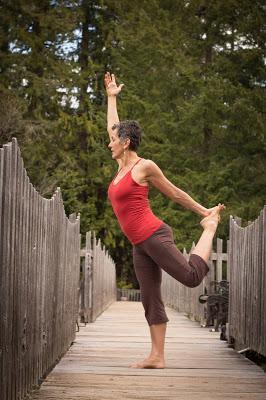by Baxter
Chiara Guerrieri by Melina Meza
Over the course of the last four years, we have written—sometimes at length—about various important components of our physical bodies, including muscles, tendons, ligaments, spinal discs, cartilage, nerves, and blood vessels. But we have only made passing reference to another ubiquitous component that in many ways holds everything together: fascia. Fascia falls into the group of specialized body tissues known as “connective tissue,” which is the material that lies between, cushions, spaces out, provides shape to and surround many other parts of our bodies. Unlike many other non-connective tissues of the body, fascia is made up of a “matrix” of material, almost like a gel, that contains fewer cells in proportion to its overall structure, making it both pliable and supportive. The cells in fascia are called fibroblasts, and they produce a tough fibrous protein called collagen, which gives the fascia shape and strength. Fascia is like a specialized kind of plastic wrap that:
- Surrounds all organs, every muscle, and individual muscle fibers
- Narrows from surrounding muscles into the tendons
- Wraps around every bone (the periosteum)
- Is the layer of tissue right under the skin (the dermis)
- Surrounds blood vessels and nerves
So our fascia creates containers that contribute to and support the shapes of other structures. And when one layer of fascia is adjacent to another layer, the fascia permits some sliding, gliding movements between the structures, such as muscle and organs, that it encloses, which contributes to your ease of movement. There are also connections between fascia along the long axis of our body, creating interconnected strings of tissue that can hold tension and transmit force. This contributes to our ability to maintain our overall structure and upright posture, and when we move and change position. For example, when we bend forward, there is an increase in the tension along the myofascial plane on the back of the body, while the one on the front becomes more slack, like an extension of what you would see at an individual joint, but now affecting the whole body. Sounds like amazing stuff!Knowing something about fascia is helpful for your asana practice because just as a muscle can shrink and tighten from environmental factors such as inactivity or habitual ways of standing and sitting, the fascia that surrounds the muscle can suffer the same fate. It turns out that when you are trying to stretch a muscle and create a longer resting muscle length, you are also stretching the fascia that surrounds the muscle. And because fascia not only surrounds individual muscles, but also forms fascial planes (connections) that run for longer distances through the body, the planes can also become tight and restricted. For example, if the myofascial connection from the outer ankle up to the side of the skull became tight, it could cause a subtle or not subtle side-bending of the body. In this case, focusing on stretching the entire side body, such as with dynamic or static New Moon pose, (Parsva Urdhva Hastasana) away from tight side could be an effective way to address that area. This goes beyond the more limited way of looking at one isolated muscle as the cause of tightness, and takes in the greater reality of our myofascial system. Although these planes can be lengthened via stretching and movement, it takes take them longer then individual muscles to reset to a longer length—from 3-6 months. In fact, Tom Meyer, an expert who studies fascia and fascial lines, recommends that we start looking at these longer myofascial connections instead of individual muscles when we want to release tension and stiffness in our bodies. For example, if we notice that our posture is stooped forward and we think initially that it is mostly a shortness and tightening of the long, vertical abdominal muscles pulling our chest forward and down, we might instead consider that our stooped posture is actually a restriction in the long myofascial connection that runs the entire front length of our body. Our approach to improving our posture might then focus on stretching that entire front fascial connection—from the front neck to the legs and ankles—via a series of active and passive backbends, rather than just stretching the abdominal muscles. Because so many yoga poses address the entire length and circumference of the body, yoga is particularly good for stretching both muscle and fascia. So, understanding a bit about fascia expands your overall understanding of the complexity of your body, taking you beyond simply considering individual muscles or joints and expanding to include changing your fascia and fascial connections. Knowing that it may take longer to see significant change in areas of stiffness due to fascial tightness may help you to be more patient with your body. Because slow, gradual, longer stretches, where your muscles finally lengthen after you overcome the stretch reflex, begin to address the fascial tightness, I recommend slow, longer holds, working up to 90 seconds holds, to address both muscle and fascia, and practicing this way consistently.
Our past recommendations here at YFHA to establish a regular home practice and to stick with it over the long haul, with a patient attitude, will serve you well as you attempt not only to release localized stiffness and restriction in certain muscles, but also to achieve more global improvement in your myofascial connections.
Note: For those who wish to learn more about these myofascial connections, which run along the front, sides, and back of the body, both near the surface of the body and deeper, and also include spiral connections, consider reading Tom Meyer’s book Anatomy Trains. Subscribe to Yoga for Healthy Aging by Email ° Follow Yoga for Healthy Aging on Facebook ° Join this site with Google Friend Connect


